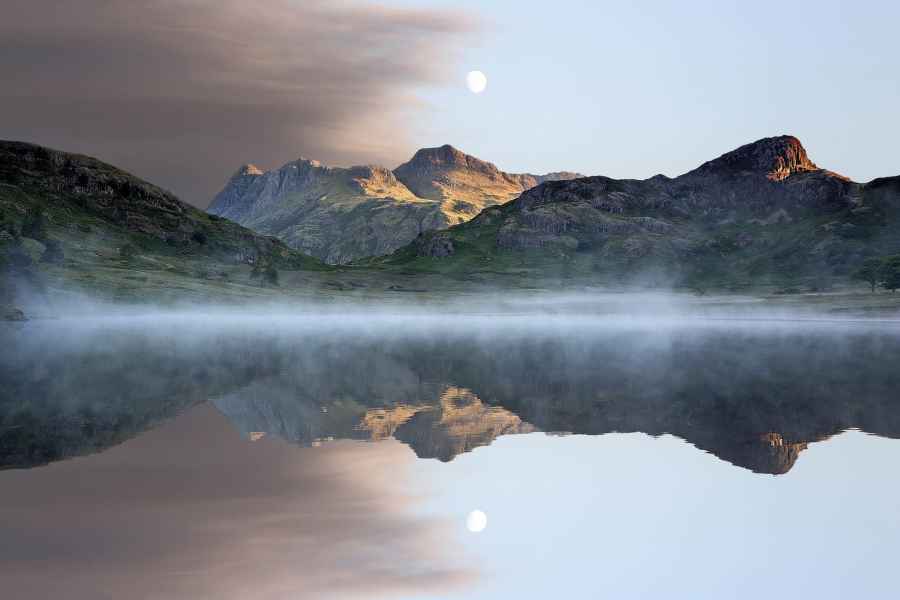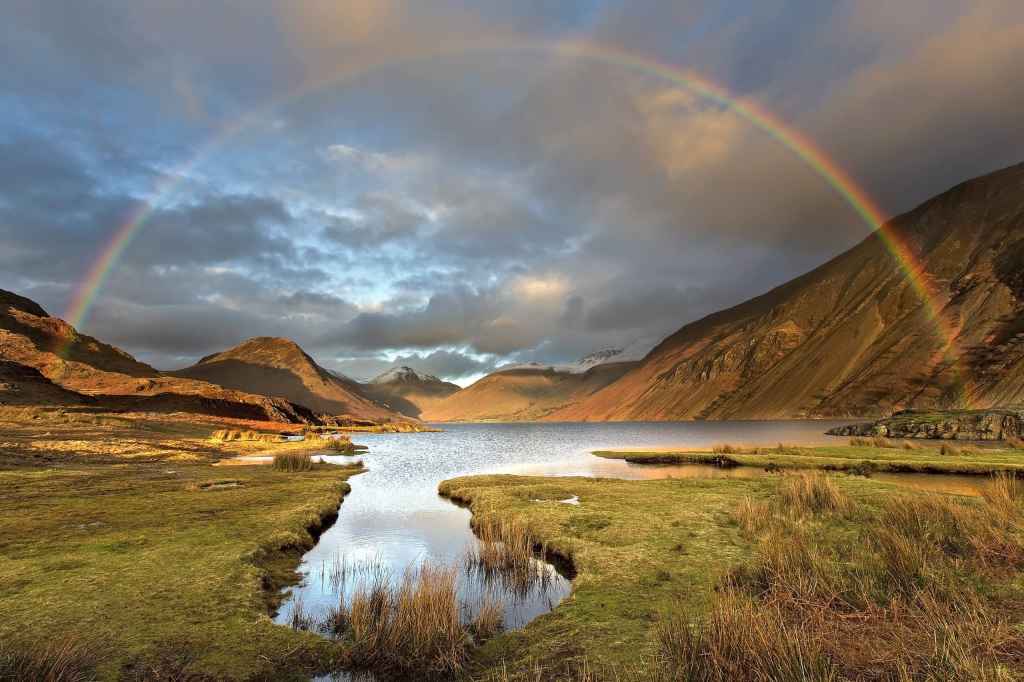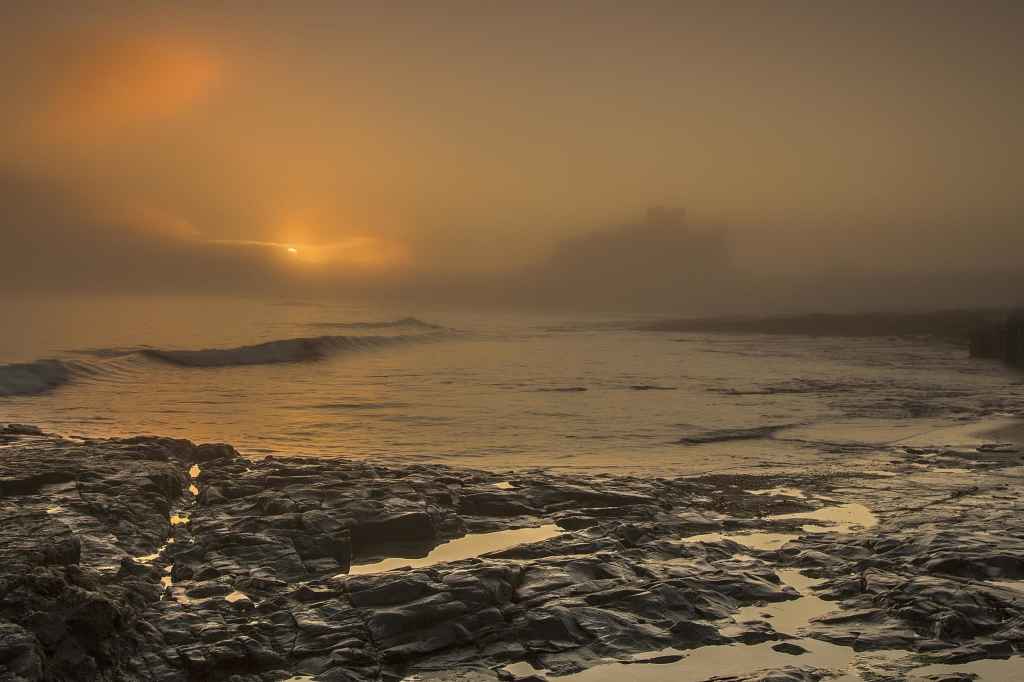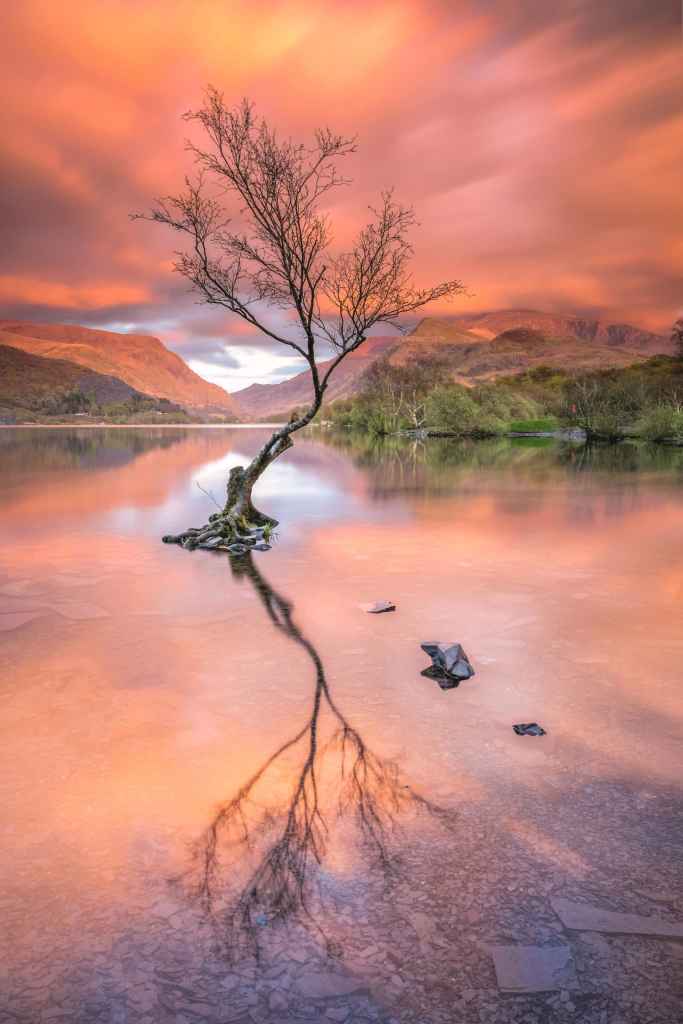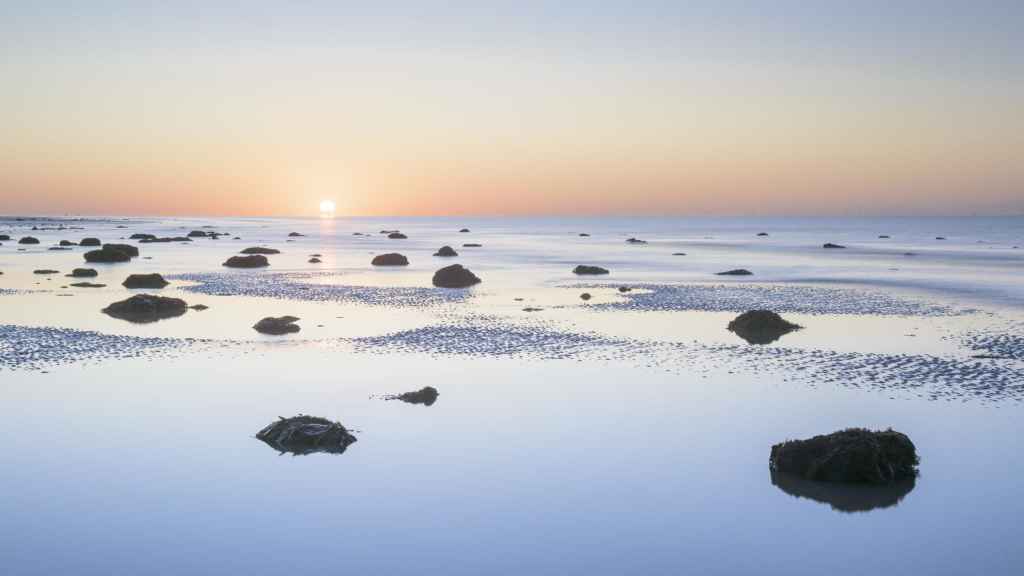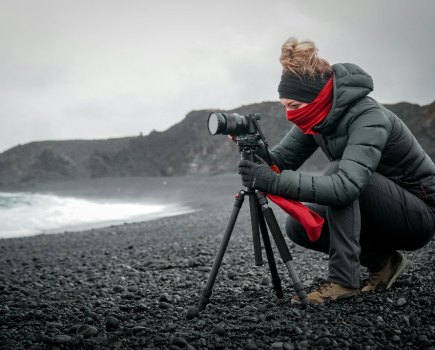From the open and wide moorlands, and the rolling countryside to rugged coastlines, the UK boasts many stunning vistas for landscape photographers. So, where are the best locations? This article gives you a list of the top recommendations from leading landscape professionals for the UK’s best photography locations.
In this guide to the UK’s best landscape photography locations, expert professional guides provide a list of places in Scotland, Northern and Southeast England, the Midlands, East Anglia, and Wales, plus the the most photogenic locations in Northern Ireland, South and Southwest England.
If you want to jump to a specific area, simply click the links below:
- Scotland
- North England
- Midland and Wales
- East Anglia
- South East England
- South and South West England
- Northern Ireland
Best landscape photography locations in Scotland
1. Traigh Rosamol, Isle of Harris
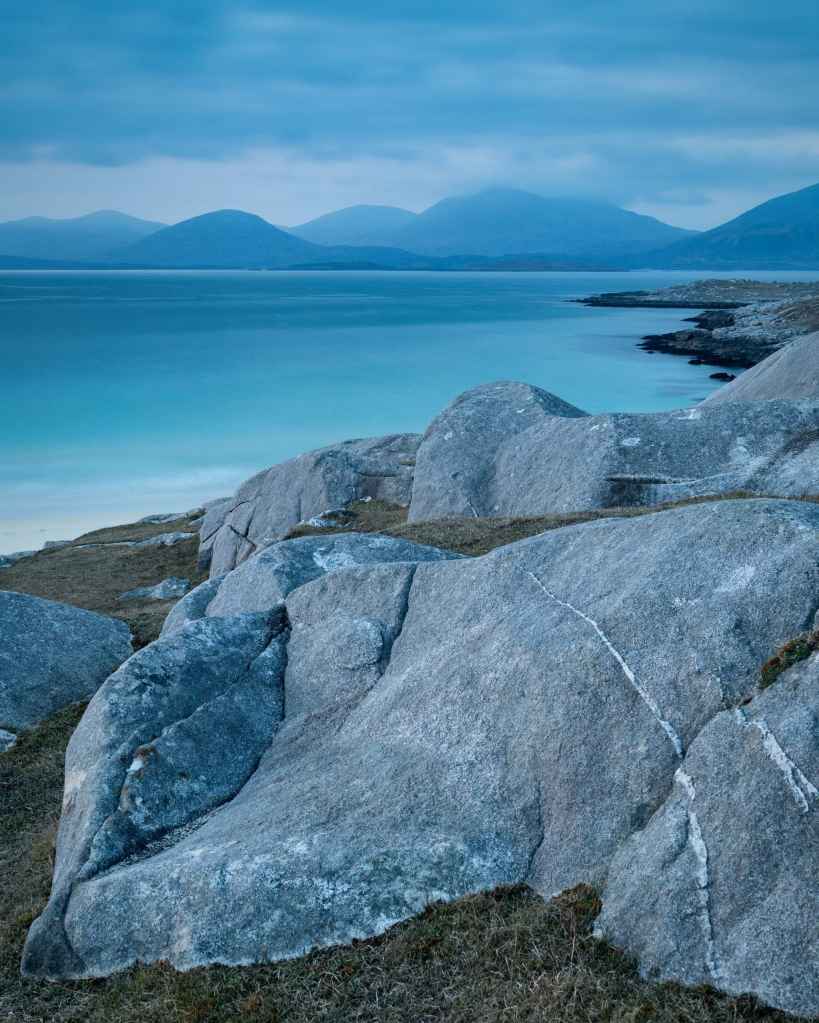
A stunning place that’s easy to access and great to shoot all year round Nikon D850, Nikon 24-70mm, 30 sec at f/11, ISO 160, Polariser, LEE 0.3 ND Grad (Very Hard), LEE Little Stopper
Traigh Rosamol looks out over the Sound of Taransay and is situated on the north-western coast of South Harris in the Outer Hebrides. Access is easy from the car park just behind the beach. This view is from the north-eastern end of the beach just before dusk and I chose to exclude most of the sand as it was a mass of footprints from the day’s dog walkers.
I wanted to create a peaceful image with a serene, blue feel so elected to use a LEE Little Stopper, which allowed me to extend my shutter speed to 30 seconds. This has removed all texture from the water and added a soft appearance to the clouds above the North Harris mountains. This is truly one of the most beautiful places on the planet and will offer amazing images at any time of year.
2. Ben Loyal from Lochan Hakel, Scottish Highlands
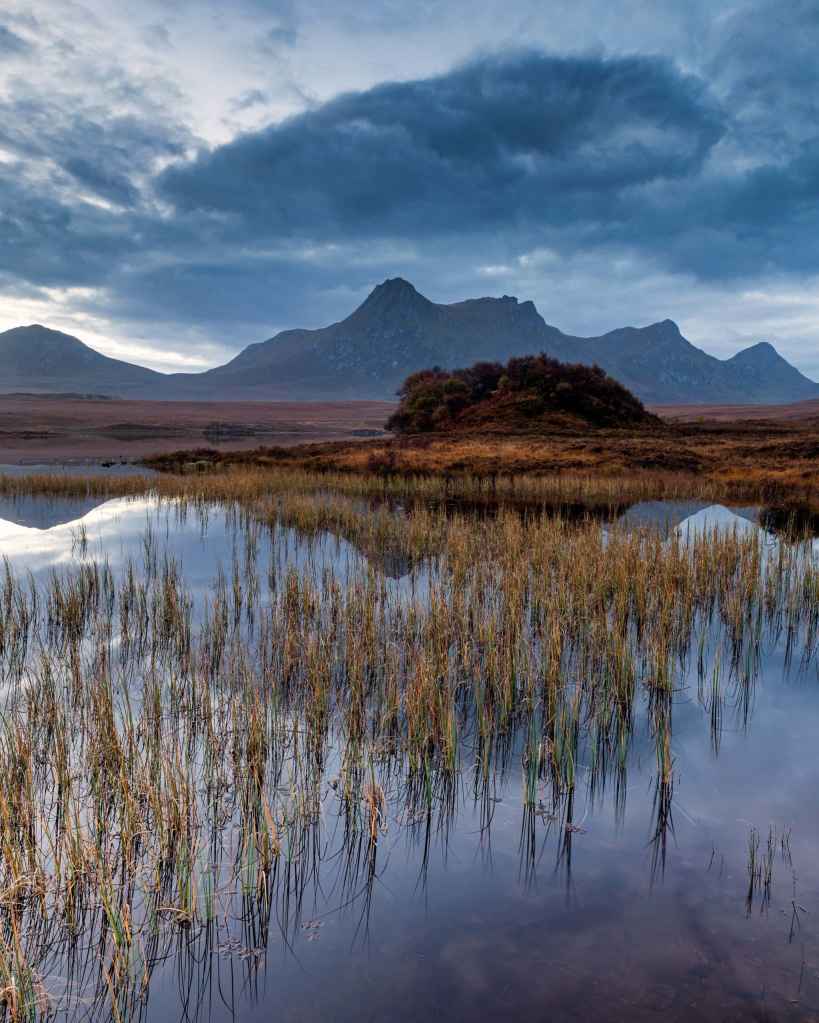
The best time to photograph is early or late in the day and I recommend taking a selection of filters with you Nikon D850, 24-70mm, 0.4 sec at f/11, ISO 64. Polariser, LEE 0.9 ND Grad (Hard) and LEE 0.6 ND Grad (Very hard – inverted)
Situated on the north coast of Scotland near the village of Tongue, Ben Loyal is one of my favourite mountains to photograph. From this viewpoint, you are facing almost due south so timing is critical. In the middle of the day at any time of year the sun will be above the mountain creating a silhouette, so early and late in the day are best.
This image was made just after dawn and the clouds have helped with the contrast. Even so, I needed multiple graduated filters to allow me to capture detail in the mountain. To get to Lochan Hakel take the minor road south from the village of Tongue for a couple of miles and you will discover the Lochan on your left. I would advise a daylight recce before arriving in the dark for your first dawn shoot!
3. Rannoch Moor and Lochan Na h’Achlaise, Scottish West Highlands

This is a great location to visit during the winter months Nikon D850, 24-70mm, 1/5 sec at f/8, ISO 31, Polariser, LEE 0.3 ND Grad (Very Hard)
After travelling north through the Bridge of Orchy, the main A82 rises up via a series of sharp bends onto Rannoch Moor. The first Lochan you see on your left is Lochan Na h’Achlaise and the best views of the Black Mount complex are from the south-eastern shore about 100m from the road.
For me, this is always a winter location. At dawn, the sun rises behind you and at dusk (as in this image) it drops in front and to the left with the last light of the day catching the mountaintops. Many people make the mistake of photographing from the road, but a short walk to the water’s edge will reward you with multiple potential foregrounds. It can be a bit boggy though, so make sure you have your wellies!
Other locations in Scotland worth visiting
- Balnakeil Bay near Durness is a wild and remote location with an extensive dune system and miles of perfect sand and turquoise blue sea.
- Duncansby Head near John O’Groats in the far northeast offers amazing sea stacks and precipitous cliffs. A great dawn location in winter.
- Glen Affric near Inverness is considered by many people to be the most beautiful Glen in Scotland. It has to be visited in autumn for the spectacular colour.
- Stac Pollaidh, in Assynt near Ullapool, is another of my favourite mountains. Great views from the northeast shore of Loch Lurgainn.
- Glen Etive and the River Etive. Access from Glen Coe. Fantastic rock details particularly on a wet, miserable day!
Your guide: Phil Malpas
Phil is a freelance photographer based in Wiltshire. He leads photographic tours around the world for Light & Land. Visit Light and Land for more information.
Best landscape photography locations in Northern England
1. Wastwater, Lake District
Wastwater is best reached from the A595 driving through Gosforth and continuing on this road for a few miles signed ‘to the Lake shore’, where there is plenty of parking. It’s the perfect late afternoon location owing to its position and great for that colourful sunset.
Autumn is the best time of year as the sun sets due west of the lake lighting up the whole image. Composition is important and this location delivers. You have Yewbarrow on the left, Wastwater Screes on the right and Great Gable and the Scafell range as the perfect backdrop. A wide-angle lens will be required. I took this rainbow with a 16-35mm lens on a full-frame camera, which perfectly delivered.
Read more on the best wide-angle lenses for landscape photography here.
2. Blackpool North Pier
Blackpool North Pier doesn’t sound like a must ‘go-to’ location but you can get some spectacular results at the right time of day and in the right season. There’s street parking just north of North Pier. It is a great structure for photography so couple this with a west coast sunset and you’re on to a winner.
The other photogenic aspect of the pier is that it’s home to thousands of starlings that roost here in late autumn and early winter. Position yourself so the setting sun is shining through the uprights, which will cast lovely shadows on the rippled sand. A sunburst will give an extra dimension too. Increase your ISO to enable you to shoot faster shutter speeds to avoid blurred starlings.
Check out this article for advice on how to shoot fast-moving birds.
3. Moonrise over Blea Tarn and the Langdales, Lake District
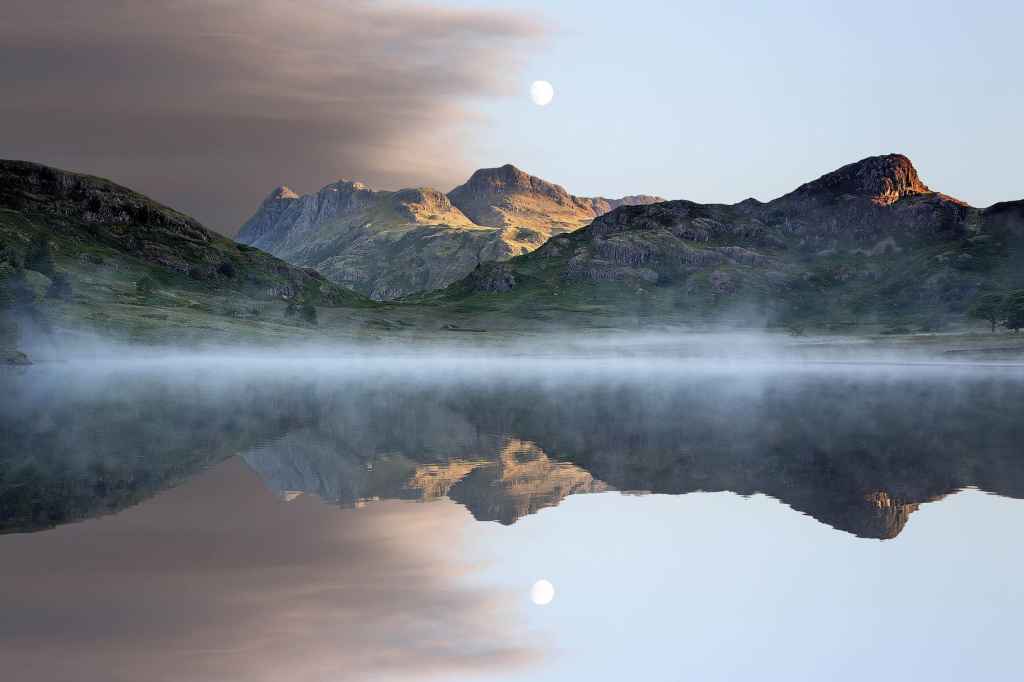
Blea Tarn is a hidden gem with a stunning backdrop of the Langdale Pikes Canon 5D Mark III, 24-105mm, 1/15 sec, f/11, ISO 100
From Little Langdale drive along Side Gates until you come to the Wrynose Pass junction. Keep right here for about a mile until you come to the National Trust parking at Blea Tarn. The tarn is a perfect early morning location with the impressive Langdale Pikes as your backdrop.
Early morning starts are best here as you want to get the Langdale Pikes showing some sunrise colour as well as some perfect reflections. Hopefully, you can get some mist dancing above the water, which is very common at this elevated location. Bring a medium focal length lens – typically 24-105mm as there are many items of foreground interest such as fences, stones, beautiful Larch trees and of course The Langdale Pikes.
Other locations in Northern England worth visiting
- Bamburgh Castle is located on the Northumberland coast. It’s worth a visit any time of year but I recommend early morning to get the sunrise and fog/mist. Time your visit for an outgoing tide, as you want those rocks to be wet, to add colour and drama. Look for compositions with slabs of rock that point to the castle for great lead-in lines. It’s the perfect destination to use a set of Graduated Neutral Density filters.
- The timeless, picturesque village of Staithes in North Yorkshire has higgledy-piggledy cottages and winding streets that lead down to the harbour.
- Tewet Tarn in the Lake District is a hidden gem. Located near St. John’s in the Vale, it offers stunning views across to Blencathra and Skiddaw. It is a great location for taking panoramic images.
- Dubs Hut and Warnscale Head Bothy are two very photogenic slate huts high above Buttermere in the Lake District. Great Gable and Haystacks offer superb backdrops.
- Mary’s Shell, a beautiful sculpture on Cleveleys Beach in Lancashire, is a perfect location at sunset to try out your 10-stop Neutral Density Filter.
- Lindisfarne is a 16th-century castle situated on Holy Island, Northumberland. This location has numerous foreground-interest objects to create perfect compositions.
Your guide: Martin Lawrence
Martin is a landscape photographer specialising in images of the Lake District and Scotland and offers photography workshops. He also writes photographic tutorials for magazines and websites. See here for more.
Best landscape photography locations in the Midlands and Wales
1. Padley Gorge, Peak District

Padley Gorge is a popular spot located near Grindleford in Derbyshire Canon EOS 5D Mark III, 17mm, 8 sec at f/11, ISO 100, Lee Polariser
Padley Gorge is somewhat of a mecca for photographers and suits both wide and telephoto lenses depending on your focus. There are several points of access: parking on the side of the B6521 (this can get very busy if you don’t arrive early), the car park at Grindleford, or the pay-and-display car park at Surprise View that involves walking down to the gorge through Bolehill Quarry (also very photogenic).
The gorge is at its most beautiful when autumn sets in and the rusty, warm colours prevail. The best time to visit is early morning, especially during autumn and winter when there is always the possibility of frosty and misty conditions. There are plenty of compositional opportunities all along the gorge so make sure you explore. It’s worth packing a circular polariser and an ND filter to create some long exposures of the water.
2. Chesterton Windmill, Warwickshire
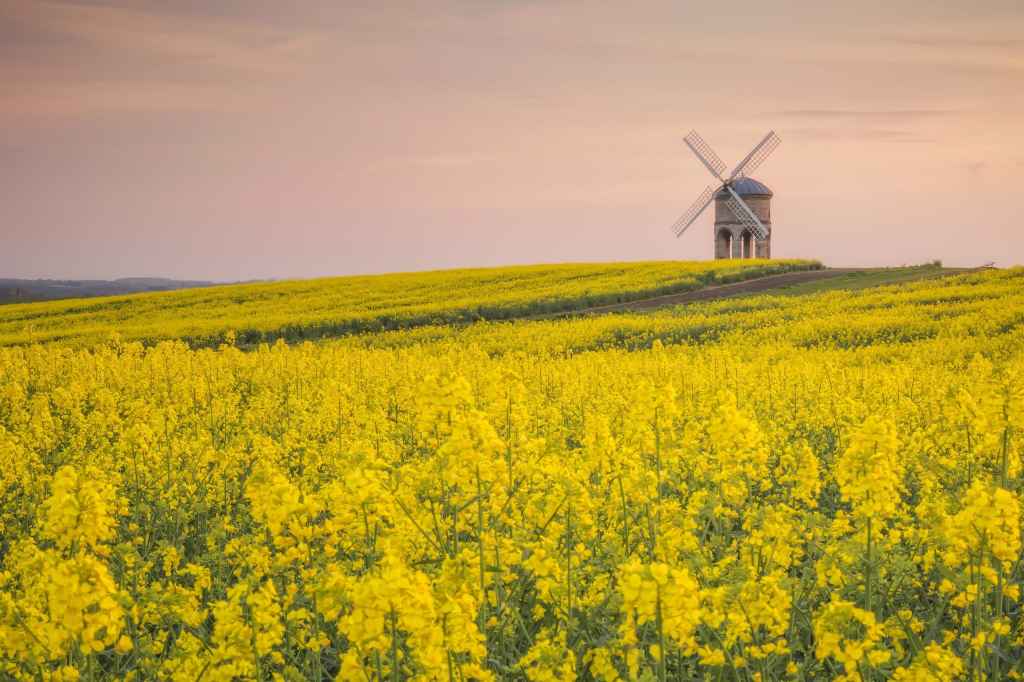
Visible from the M40, this little windmill situated in Warwickshire is an attractive proposition for any photographer Canon EOS 5D Mark III, 24-70mm, 1/20 sec at f/16, ISO 100
As a photographer based in the Midlands, Chesterton Windmill has been on my radar for some time. It’s architecturally appealing with its unique circular design and archways. The windmill is accessible from the side of the road but the field in which it resides is in constant use so it’s worth paying attention to where you’re standing and being mindful of the crops.
The windmill itself stands on the top of the hill, which provides the opportunity to capture some vistas of the surrounding countryside. There’s no perfect time of day to capture the windmill, but I prefer it at sunset, or during stormy weather, which provides a dramatic backdrop. It’s worth bearing in mind that the crop is on rotation and this can make a more interesting tableau if you manage to catch the crop during a colourful year.
3. Three Cliffs Bay, The Gower
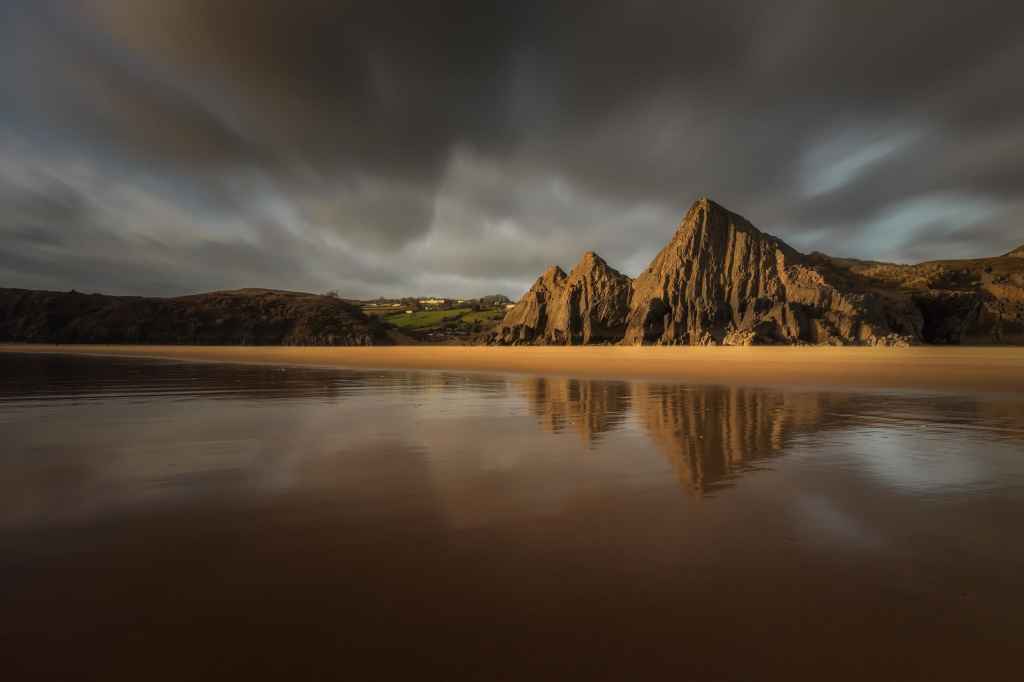
Three Cliffs Bay, South Wales Canon EOS 5D Mark IV, 16-35mm, 30 sec at f/16, ISO 100, Lee Circular Polariser and Big Stopper
Access to Three Cliffs Bay involves some scrabbling over sand dunes, but it’s worth it to get down onto the shoreline. You can park at the Gower Heritage Centre and walk down to the beach, but your return to the car park will be uphill. I recommend visiting when the tide is going out, which will open up access to some of the adjacent bays such as Pobbles, Tor and Oxwich.
As the tide recedes it provides some interesting wide-angle compositional opportunities including the cliffs themselves, especially when the light is low. Visiting at sunrise or sunset provides the best chance of getting some interesting conditions, especially during autumn and winter when the cliffs catch light from both the sunset and the sunrise. Use an ND filter of 6 or 10 stops to create some attractive long exposures.
Other locations in the Midlands and Wales worth visiting
- The Tree on Llyn Padarn has become one of the great photography clichés of Snowdonia. Access is via Padarn Country Park, and the tree itself is visible from the car park. The tree is most attractive during autumn and spring. For the best conditions in the surrounding scenery, shoot during the golden hour. During sunrise, there’s more chance of the lake being still and the possibility of ethereal conditions, but sunset can create some gorgeous light on surrounding mountains and in the sky. Using a wide-angle lens and a circular polariser will help bring out reflections.
- Penmon Point (Trwyn Du in Welsh) is an attractive lighthouse that sits on the northeastern corner of Anglesey in north Wales. From the shoreline, there is a view
of both the lighthouse and Puffin Island in the distance, with views back across the Menai Straits. - The Vale of Glamorgan harbours an intriguing coastline. Nash Point, with its epic rock formations, makes for a captivating composition, whatever the weather.
- The relative flat of the Midlands is thankfully interrupted by the Malvern Hills in Worcestershire, which provides plentiful vistas of the surrounding countryside. This area is at its best in autumn, especially at sunrise.
Your guide: Verity Milligan
Verity is a professional urban/landscape photographer based in Birmingham. She has worked on campaigns for international organisations, leads workshops for Light & Land and is an ambassador for Zeiss. See here.
Best landscape photography locations in East Anglia
1. Thurne, Norfolk
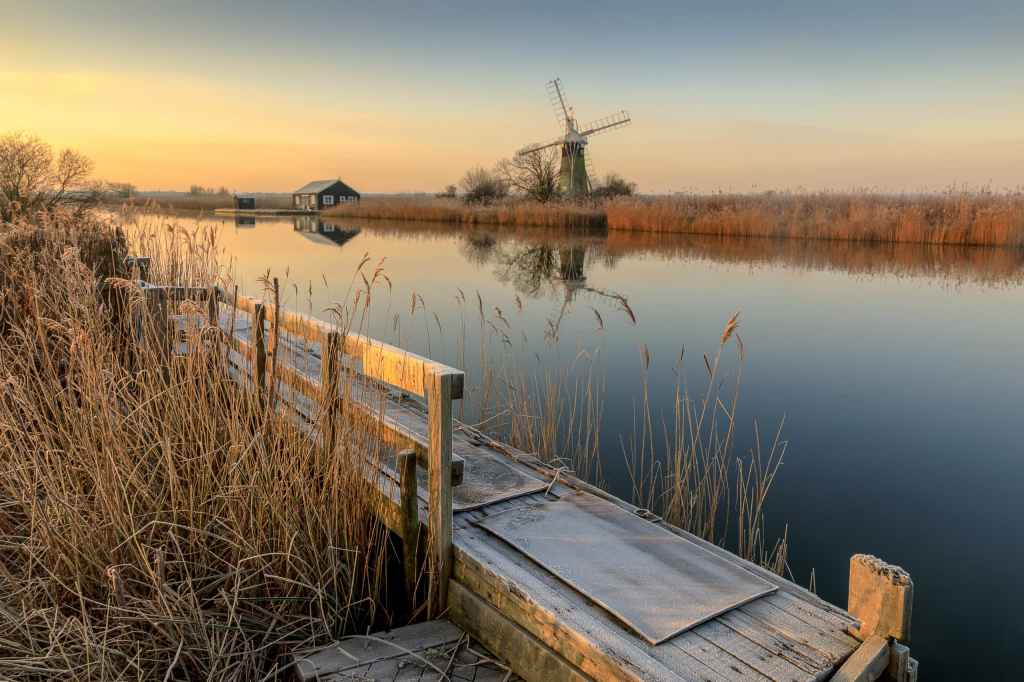
St Benet’s mill reflected in the River Thurne on a calm, frosty morning, taken from the southern side of Thurne Dyke Canon EOS 5D Mark IV, 24-105mm, 1/8 sec at f/16, ISO 100, LEE Polariser, ND Grad (0.6)
Thurne is a classic Broads location with lazy rivers, whispering reedbeds and two windmills (or wind pumps to be precise), the gleaming white painted Thurne Windpump and the red brick St Benet’s. There are a handful of parking spaces beside Thurne Dyke (NR29 3BU) from where a path runs around the dyke and along the river.
Use a wide-angle or standard zoom lens and look for groups of reeds, boats or old jetties to use as foreground interest for shots of the windmills. A polariser will help to make the most of any reflections. There are opportunities in golden hour light at either end of the day here but Thurne is at its best early on a calm morning with crystal-clear reflections and mist swirling up from the river and marshes or a coating of frost on the reedbeds. Usually late autumn to early spring has the best conditions and less boat traffic.
2. Old Hunstanton, Norfolk
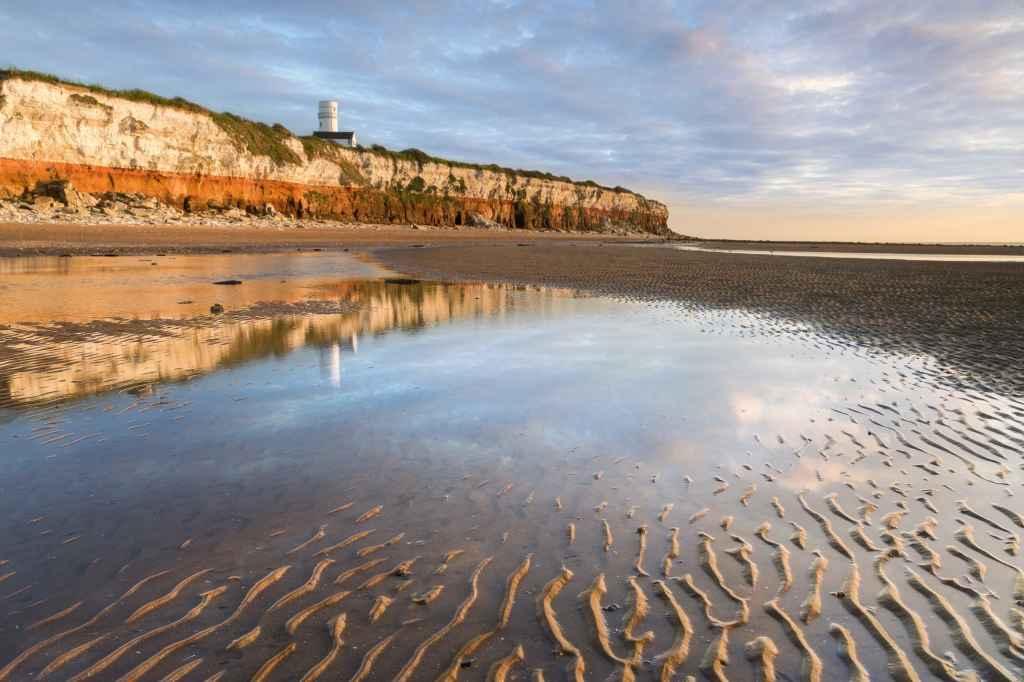
Looking south towards Hunstanton cliffs Canon EOS 5D Mark IV, 24-105mm, 1/8sec at f/16, ISO 100, LEE Polariser, ND Grad (0.6)
This beach is a vast swathe of golden sand beneath distinctive red and white striped cliffs. The unusual rock formations, which stretch out in lines below the cliffs, are fantastic for long exposures, so don’t forget your Big Stopper 10-stop filter.
Big wide-angle views can be found in all directions – looking out to sea at sunset, along the line of cliffs with the shipwreck in the foreground or back towards the cliffs, which look especially good when lit by low sidelight or reflected in one of the shallow pools left at low tide.
Check the tide before you visit – a receding tide is the safest and best for a footprint-free beach. There is a car park on the cliff top (PE36 6EL) and a footpath down to the beach. Turn left at the bottom for the cliffs; there are also dunes worth exploring to the right.
3. Shingle Street

Looking north along the shoreline to the cottages on the beach Canon EOS 5D Mark IV, 16-35mm, 114sec at f/11, ISO 100, LEE Big Stopper, Hard ND Grad (0.6)
At first glance, this remote shingle beach on the Suffolk coast looks like an unlikely place for landscape photography and it can be challenging to find the shot here but once you get ‘your eye in’ it can be amazing. The shoreline is constantly being re-moulded by the sea into sweeping curves and lagoons – and these shapes make fantastic leading lines while a couple of white cottages provide much-needed focal points.
Long exposures are very effective; the smoothed water simplifies the shapes of the shoreline. Monochrome also helps to contrast the tones and textures of the water and bright cottages against the dark shingle. Dramatic weather suits this beach but it’s not all doom and gloom: in spring the beach is alive with colourful wildflowers. There is a small car park on the left just before the houses (IP12 3BG), and from there, it is a short trudge across the shingle to the shore.
Other locations in East Anglia worth visiting
- Happisburgh Lighthouse is a beautiful red and white lighthouse set back from the clifftops. The beach below is littered with interesting old sea defences as well.
- Southwold has plenty of photographic spots on offer, from the quirky pier, and colourful beach huts in the dunes, to the ramshackle old harbour.
- Dovercourt lighthouse is a Victorian lighthouse resembling a moon landing craft that has landed in the sea off the Essex coast, fabulous for long exposures and sunrises alike.
- The stretch of the River Stour that meanders its way through the meadows between Flatford and Dedham in the heart of Constable Country is wonderful.
Your guide: Justin Minns
Justin is a landscape photographer known for his atmospheric images of East Anglia. As well as running workshops in the region he is also the author of Photographing East Anglia, a photographers’ guidebook to the area. See here for more.
Best landscape photography locations in Southeast England
1. Church Norton, West Sussex
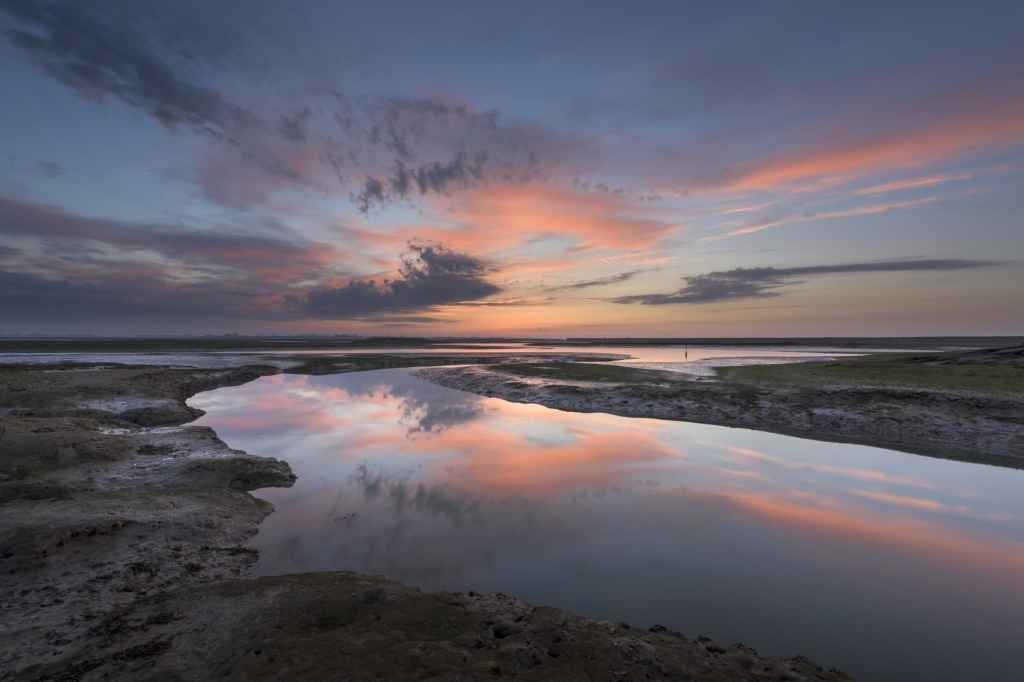
The flat, calm waters here act as great mirrors with colourful skies Nikon D810, 14-24mm, 1/6 sec at f/11, ISO 64
Best at very high tides at dawn, this discreet, spit-protected RSPB wetland location typically brims with flat, calm waters at the highest tides providing fabulous opportunities to use nature’s mirror to great effect.
This area often catches coastal mists too so that’s a real bonus. The little local church is very picturesque, nestling in its own well-kept space with no other buildings around it. You can also access a typically deserted shingle beach from here that delivers great low-tide dawn ops. Park up in St Wilfred’s Church parking lot (PO20 9DT) and follow the signs to the RSPB nature reserve.
2. West Wittering, West Sussex
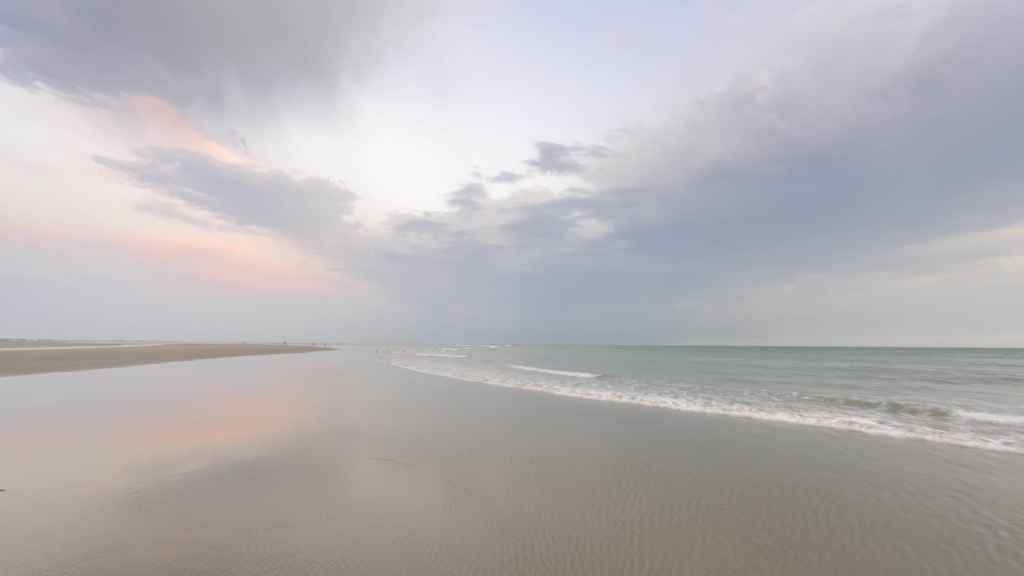
Perfect for minimal seascapes with gentle, pastel-coloured skies. Nikon D810, 14-24mm, 0.4 sec at f/8, ISO 64
The location for my winning LPOTY image is best at low tides during sunset or dawn. An expansive sand shelf of a beach adjacent to the Chichester Channel with big tidal movements, this immersive location has spacious, uninterrupted westerly views. Perfect for both subtle, minimal shots and expansive, dramatic sunset scenes.
Avoid busy times, there’s nothing worse than hordes of people and packs of dogs leaving footprints gouged into your unblemished sandy foregrounds. Use a Tide Times app (and the Photographer’s Ephemeris) to plan your trip.
Often the parking lot here (PO20 8AJ) will be shut when you want to shoot, so park up outside and head down the long entrance driveway. You may have to park some distance away so allow 20-30 minutes for the walk to the water’s edge, especially if the tide is way out.
3. Aldwick Rocks, West Sussex
These primaeval-looking humps of stone provide a foreground to midground visual punctuation and make great silhouettes when light levels are low, at sunset or dawn during low tide. There’s a beached decomposing wreck of a section of the WWII D-Day Mulberry Harbour nearby at this location, and that can make for an interesting subject when it’s semi-submerged at low tide.
There’s nothing to compare with having the beach all to yourself at 4 am, for example, under steadily evolving pre-dawn skies, with freshly laundered, brand new sand forms, varied tide pools after each turn of the waters and beautiful twilight colours bouncing off reflective expanses of damp beach and rock formations.
The most important thing with the coast is getting to know when the most favourable moments are for your visits. For this location, I recommend parking on Marine Parade (PO21 2QA) opposite Marine Park Gardens near the boat pound at the west end.
Other locations in Southeast England worth visiting
- Pagham Harbour/RSPB Pagham is one to visit at high tide during dawn or sunset. This location is great for both bird and landscaper photographers. Extended walks on pathways around the reserve provide views of the dynamic shapes in the reserve’s wetland mudflats and grasses. Park at the end of Church Lane (PO21 4NR) where the road stops and then follow the signs to the nature reserve.
- Littlehampton is best to shoot at low tide during dawn or sunset. It’s a big sandy beach with interesting rockpools; it also has a wonderful skeletal timber pier formation at the estuary of the River Arun that makes for interesting long exposures. Go right down to the end of Rope Walk and park up in the pay and display area (BN17 5DL) The beach is over the ridge.
Your guide: Benjamin Graham
Benjamin was the winner of LPOTY in 2017. He runs tours with Light & Land and teaches photography privately and at West Dean College. See his website, Twitter and Instagram for more.
Best landscape locations in South and Southwest England
1. Colmer’s Hill, Bridport, Dorset
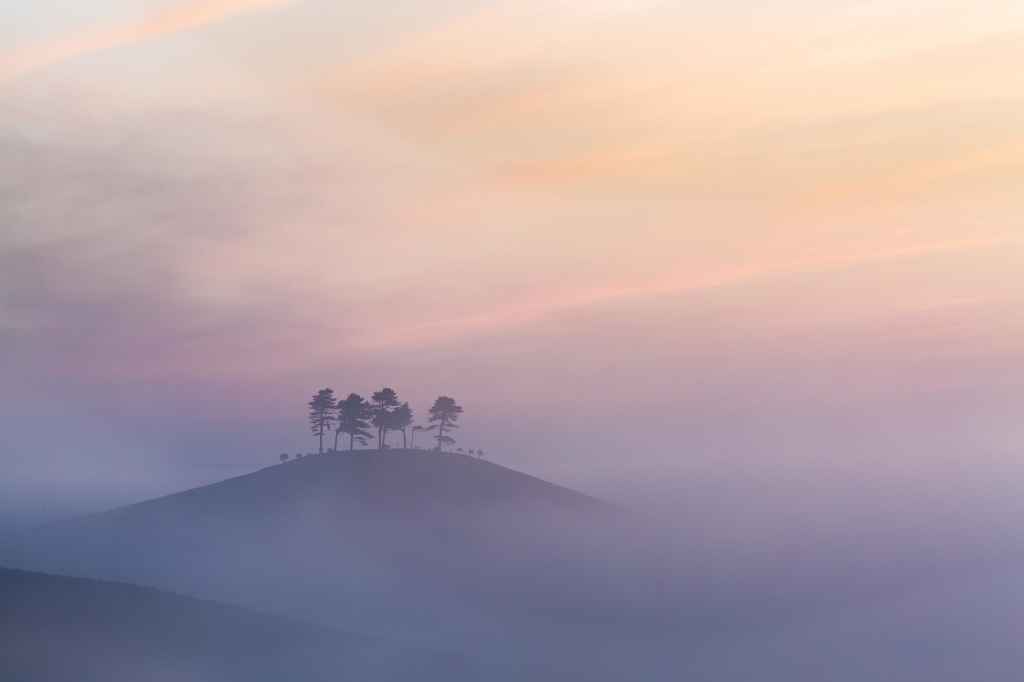
Capture this iconic Dorset scene at sunrise. Canon EOS 5D Mark III, 70-300mm, 0.5 sec at f/11, ISO 100
The conical tree-clad Colmer’s Hill is an iconic landmark in West Dorset and a ‘must visit’ location if you’re in the area. Sunrise is undoubtedly the best time to photograph it and misty conditions are an added bonus. Parking is extremely limited beside the A35, so arrive early or be prepared for a long walk!
There are good vantage points from both Quarr Hill and Eype Down, with footpaths providing easy access. In good conditions, there can be many different compositions to try, mainly based on using Colmer’s Hill as a focal point within the wider landscape, or floating in a sea of mist!
2. Portland Bill, Dorset
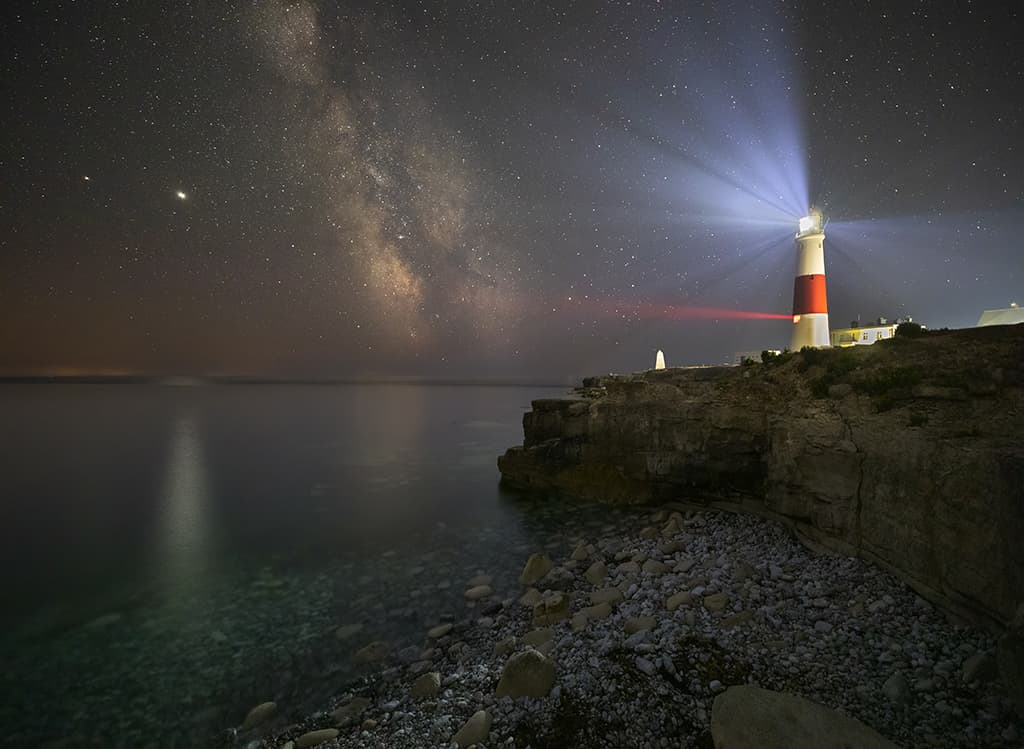
Portland Bill Lighthouse and the Milky Way make a great combination. Canon EOS 5D Mark IV, 16-35mm, 10 sec at f/2.8, ISO 6400
The Isle of Portland offers much photographic potential, but the red and white lighthouse at Portland Bill is the highlight. It can be shot from either side with crashing waves in the foreground and at both sunrise and sunset. This is also one of the best locations along the south coast for astro-landscape photography, with very little light pollution when looking south towards the Milky Way.
Just below the lighthouse lies Pulpit Rock, another useful focal point for shots along the shoreline, particularly at sunset. Portland can be a great place for long exposures, so take your 10-stop ND filter. Dramatic scenes can be captured in stormy conditions, but take care as the waves can be large and powerful!
3. Rockford Common, New Forest National Park, Hampshire

Capture the purple heather-clad heathland in misty conditions at sunrise. Canon EOS 5D Mark III, 24-105mm, 4 sec at f/16, ISO 200
Rockford Common lies above a shallow valley on the western side of the New Forest. The classic viewpoint with a path leading through a colourful purple expanse of heather-clad heathland has become a popular spot, and rightly so. The valley is particularly prone to morning mists throughout the year, so sunrise tends to offer the best opportunities, although late afternoon also works well if the heather is in bloom.
Don’t restrict yourself to the one honeypot location though, because all of the surrounding heaths offer much potential and tend to be less busy into the bargain. There is scope for expansive wide-angle shots as well as for landscape details, layers and isolated trees.
Check out this list of the best wide-angle lenses for landscape photography.
4. Glastonbury Tor, Somerset
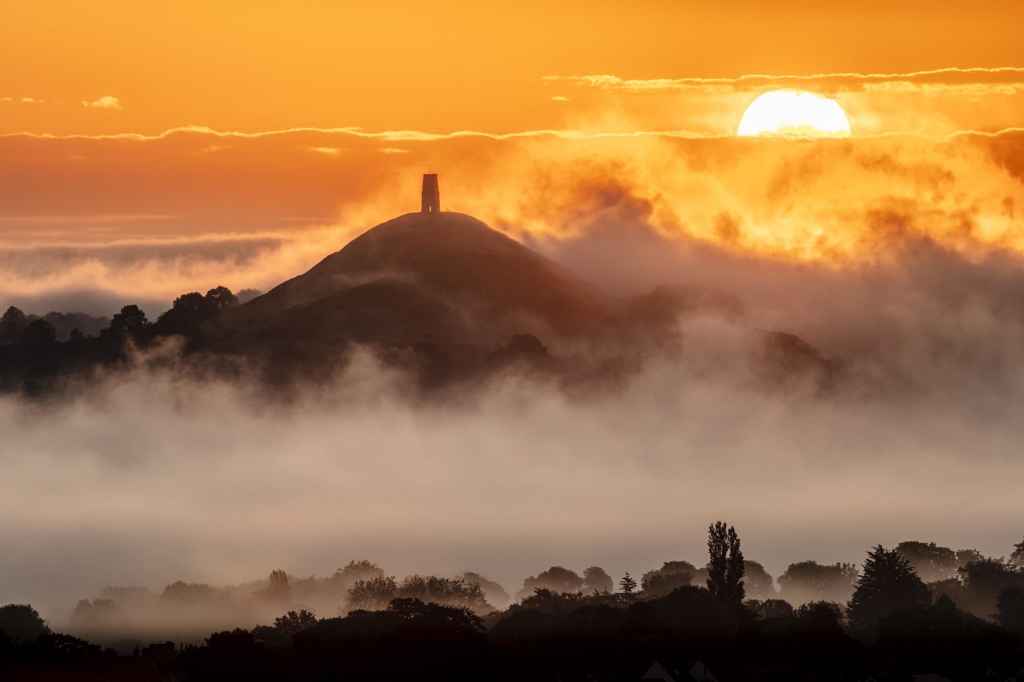
Visit in mid-summer to capture the sun rising directly behind the Tor. Canon EOS 5DS R, 100-400mm, 1.4X III, 7 bracketed exposures from 1/4000 sec to 1/60 sec, ISO 100
The familiar outline of Glastonbury Tor can be seen from many places throughout the flat landscape of the Somerset Levels and from the surrounding hills. It can be used as a distant focal point, but there are also great shots to be had from the summit of the Tor itself.
One of the best spots from which to photograph The Tor surrounded by mist or set against the rising sun is Walton Hill just south of Street. From here a telephoto lens of 300 to 600mm is required. There is a convenient car park right at the best vantage point on the summit. To get the sun rising directly behind the Tor you’ll need to visit in mid-summer. Use an app such as TPE or PhotoPills to ensure you pick the best day!
5. St Michael’s Mount, West Cornwall
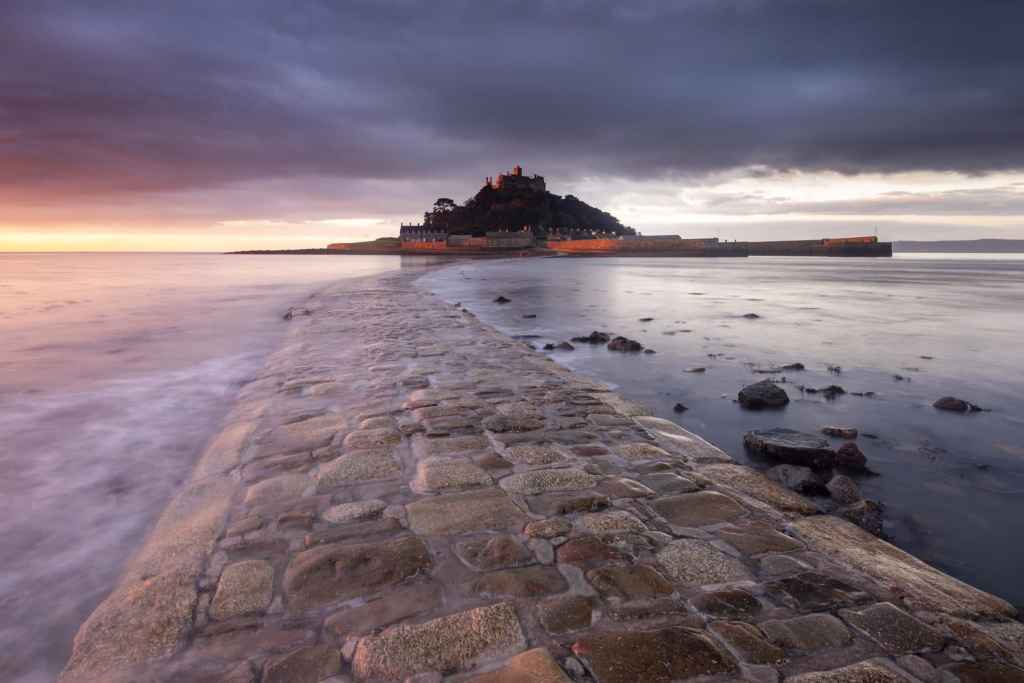
Early morning sunlight will illuminate the Mount, while the old causeway makes a great lead-in, directing the viewer’s eye toward the island. Nikon D800E, 16-35mm, 8 sec at f/14, ISO 100
Just a short drive from Penzance is one of Cornwall’s most recognisable and picturesque landmarks. St Michael’s Mount is a tidal island, which at low tide links to the parish of Marazion by a man-made cobbled causeway. A tide in the region of 2-3m is often a good height, revealing the causeway, which provides an obvious and attractive lead-in line toward the Mount in wide-angle compositions.
This is a location that can work well throughout the day, but at sunrise, the beach is quieter, cleaner and golden early morning sunlight will bathe the bay and island. At higher tides, much of the beach is submerged, but there are slipways and rock pools that provide foreground interest. Be prepared to regularly change viewpoint as the tide either rises or falls. Wear wellies to avoid getting wet feet!
A good range of lenses will be useful, but a wide-angle zoom – in the region of 16-35mm – is often a good choice, producing dynamic results with depth and interest. This can be a popular location, so arrive and set up early.
6. Hartland Quay, North Devon
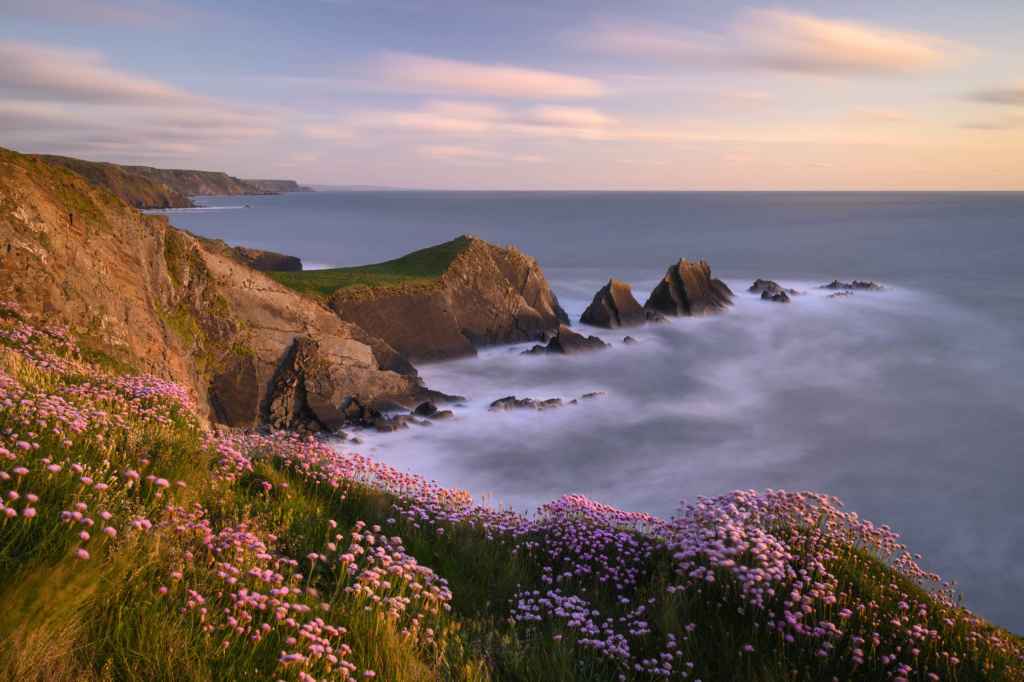
This stretch of coastline offers photographers a wide choice of viewpoints. Nikon Z 7, 24-70mm, 131 sec at f/11, ISO 200
This stretch of north Devon coastline is among the most dramatic and spectacular you will find anywhere in South West England. Hartland Quay is on the edge of the Atlantic Ocean – it is a remote, wild and windswept place. From Clovelly Cross, take the B3248 to Hartland and continue to Stoke and past St Nectan’s church toward the coast. Drive down the narrow track toward the beach – there is plenty of parking near the Hartland Quay Hotel.
At high tide, explore the views from the cliff tops – in spring they are carpeted with sea pinks that add colour and interest to wide-angle vistas. You can walk to Speke’s Mill Mouth, which is also photogenic. At low water, explore the rocky beach, which is home to photogenic ledges and rockpools. This is a good location for evening light and sunset. It’s worth carrying a versatile range of focal lengths. A good sturdy tripod will be essential, particularly in windy, stormy conditions. The hotel is a great spot to shelter and have a pint after an evening’s shoot.
7. Great Staple Tor, Dartmoor, Devon
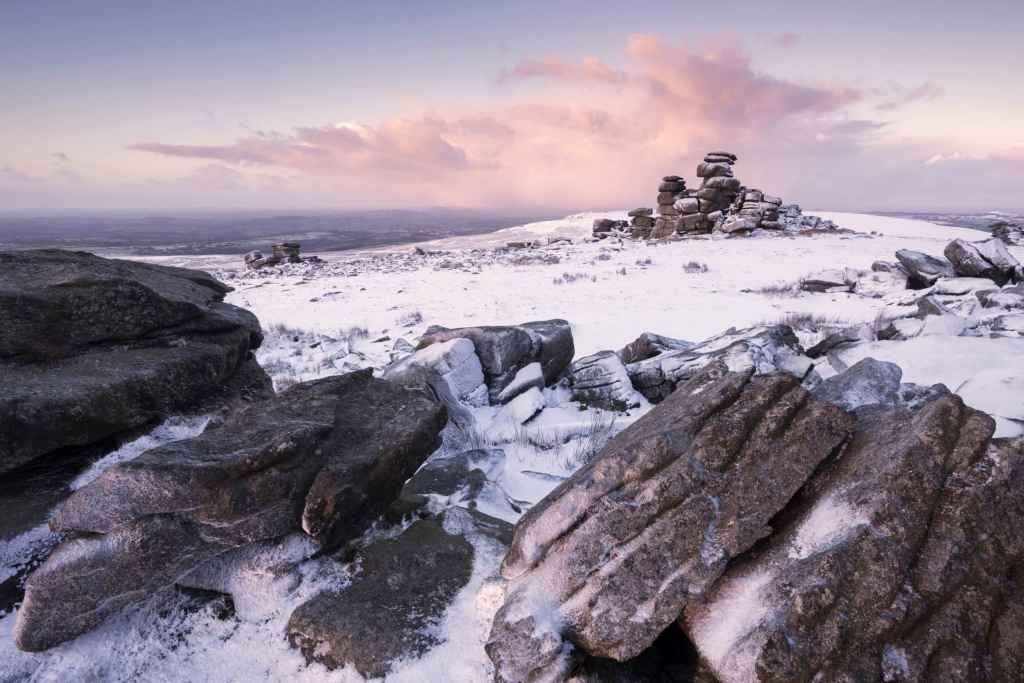
In winter, a dusting of snow will add a seasonal feel to your shots. Nikon D810, 17-35mm, 1/5sec at f/14, ISO 200
Dartmoor National Park is home to some extraordinary scenery. The landscape is wild, rugged and punctuated with large, imposing granite outcrops – or tors. This is not a landscape you want to shoot on a clear, sunny day. Instead, you want drama. Autumn and winter are ideal times of the year. During autumn, the bracken becomes golden and the light and skies tend to be more suited to landscapes.
This can be an unforgiving place, so wear water and windproof clothing. Great Staple Tor is one of many great tors to visit. It’s home to a couple of large granite pillars and there is no shortage of compositions to be found. There is a large car park at Pork Hill on the B3357, between Tavistock and Merrivale. Walk north up the slopes of Little Staple Tor and carry on to Greater Staple. The climb will take you about 30 minutes, but this is often a quiet location and well suited to a morning or evening light.
8. Trebarwith Strand, Cornwall
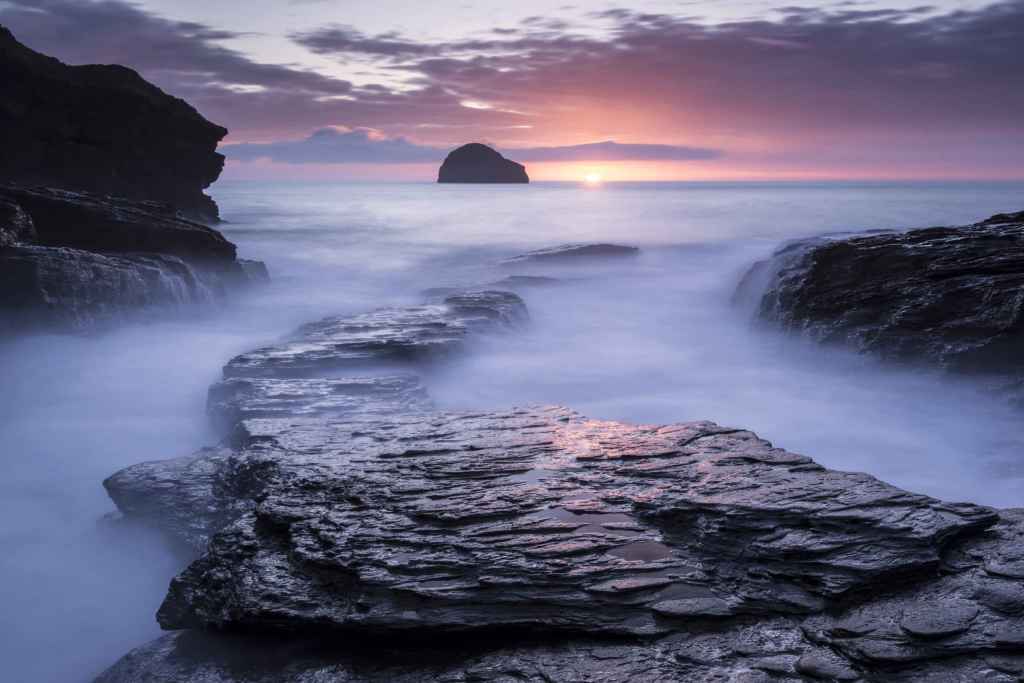
Trebarwith is a great spot to shoot, but it works particularly well when sunset coincides with high tide. Tread carefully as the rocks can be slippery. Nikon D800E, 16-35mm, 25 sec at f/16, ISO 100
Located about 2 miles south of Tintagel – home to the myth and legend of King Arthur – Trebarwith is a golden, sandy beach, popular with tourists and surfers. It can be busy in the summer months, so visit out of the holiday season and on a weekday to avoid the crowds and messy footprints. You can achieve good shots at either high or low water, but a mid-tide can prove more challenging. At high tide, the beach is completely submerged, and you can stand on the Strand and shoot out towards the sea with incoming waves rushing in either side of you.
But be wary of spring tides and big waves. For safety, always consult a good tide app, like AyeTides, before you visit. This is a great sunset location and Gull Rock on the horizon provides an obvious focal point. Take wide-angle lenses, ND filters and grads and also a lens cloth and wipes – sea spray can be a real issue here if there is onshore wind.
Other locations in South and Southwest England worth visiting
- Corton Denham is a classic rural village scene in south Somerset best viewed from Corton Hill. The lighting is best late in the afternoon between May and July.
- Knowlton Church is a ruined Norman church set within a Neolithic henge earthwork. Great at sunrise and sunset or for spooky night photography, as this is one of Dorset’s most haunted locations!
- Swyre Head, Worth Matravers in Dorset is one of the most impressive viewpoints along the Jurassic Coast World Heritage Site. Beautiful at any time but especially good at sunset.
- Bolderwood Ornamental Drive in the New Forest National Park, Hampshire, is an impressive mixture of trees, which makes this a great location for capturing autumn foliage.
- The Crowns Engine houses at Botallack in west Cornwall, perched above the sea, create an iconic shot. The ruined tin mines make a great long exposure subject.
- Bedruthan Steps are arguably Cornwall’s most impressive stretch of coast, home to large granite stacks – or steps. In spring, wildflowers carpet the cliff tops.
- The lighthouse at Trevose Head provides a great focal point in wideangle shots. Padstow Lifeboat Station is within walking distance and worth shooting too.
- Valley of Rocks, just north of Lynton in Devon, is an impressive dry valley and boasts incredible views and geology. It is one of Exmoor’s most scenic locations.
- Located on the south-western edge of Dartmoor, Shaugh Prior is home to boulder-strewn rivers, oak-woods and riverside walks. Best shot in spring or autumn after a little rainfall. There is a small National car park nearby.
Your guides:
Ross Hoddinott
One of the UK’s top landscape photographers, Ross is the author of several best-selling photography books. He co-runs Dawn 2 Dusk Photography, which specialises in landscape photography workshops. See here for more.
Guy Edwardes
Based in his home county of Dorset, Guy has been a landscape and nature photographer for over 25 years. His work has been widely published and he runs a series of popular photographic workshops all over the world. See here for more.
Best landscape photography locations in Northern Ireland
1. Dunluce Castle, Co Antrim
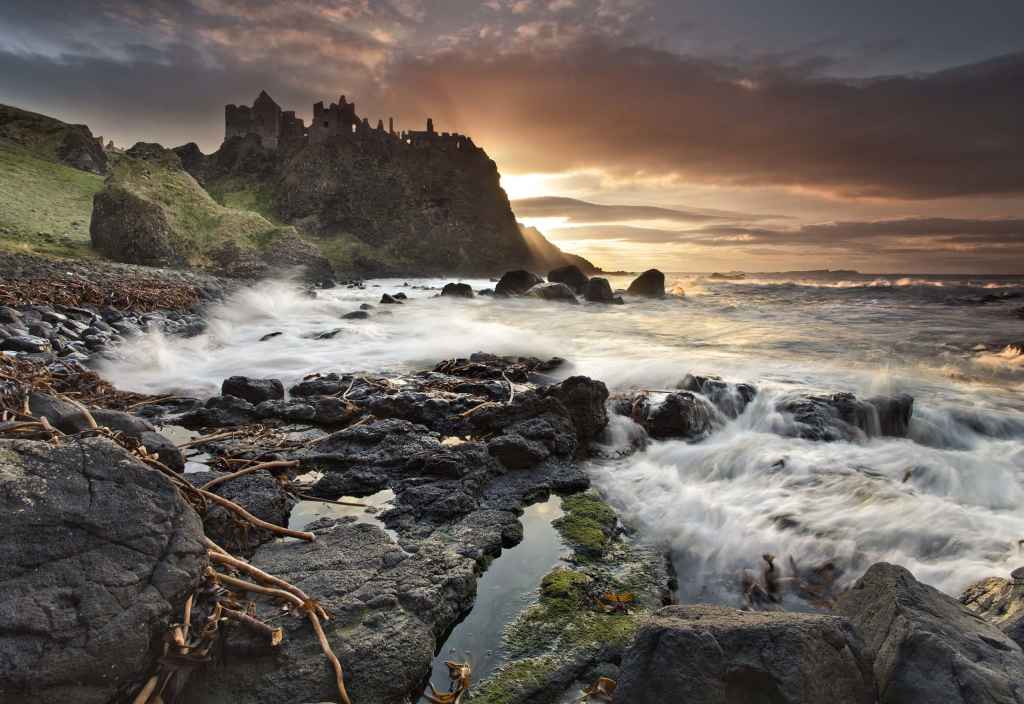
Capture from sea level for the most dramatic view of the castle. Canon EOS 5D Mark II, 17-40mm, 1/6 sec at f/16, ISO 50
Approximately 20 minutes by car further along the coast from Ballintoy you’ll find Dunluce Castle. This location was used in Game of Thrones and is an impressive ruined castle that sits precariously on the edge of a cliff overlooking the sea.
You can shoot the castle from various angles, but the most dramatic images can be captured down below near the sea. Here you can use the waves and rocks as foreground interest with the castle looming above. It’s a bit of a steep scramble down and as always the sea must be treated with respect at this location.
I always try to capture the sun setting out to sea or going down just behind the castle as I have done here. As the castle sits so high in the frame, once you meter for the lighter areas, the castle will end up in silhouette, even if you’re using graduated filters. This might be what you want to achieve but for this image, I shot three bracketed exposures and blended them later, which meant that I was able to keep detail in the shadow areas.
2. The Hares Gap, Mournes, County Down
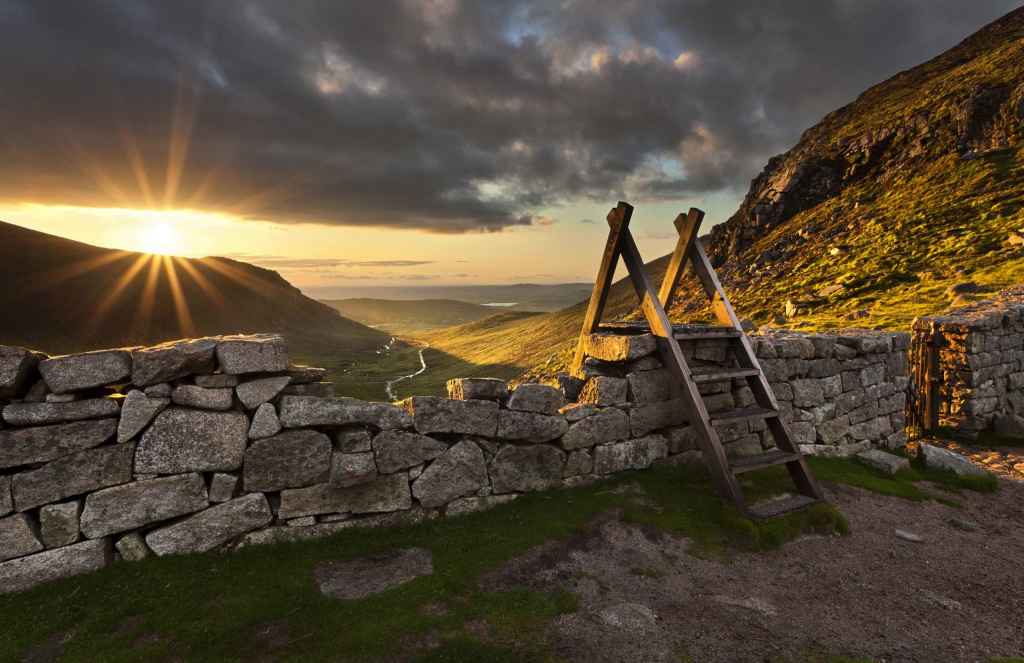
Capture this location at sunset and use the wall and stile as your main focal point. Canon EOS 5D Mark II, 17-40mm, 0.6 sec at f/22 ISO 100
In County Down, you’ll find the Mourne Mountains. If you love hiking and don’t mind an early start there are numerous dramatic images to be captured here on various peaks. This particular spot is called The Hares Gap and is a gentle hike compared to other spots in the Mournes. Starting near Tollymore Forest Park you walk up through the Valley along the Trassey River. Keep right along the hillside until you make it to the famous Mourne Wall.
If you time it right you can capture some stunning images back down the valley as the sun sets. Here I used the wall and stile as the main focal point with some wonderful light from the setting sun in the valley beyond and the river snaking off towards the horizon. I bracketed my exposures and blended them later. I also had some issues with flare so a small umbrella held just above the top of the lens was enough to eliminate it.
3. Ballintoy Harbour, County Antrim

The sea was crashing up through the horseshoe-shaped hole in the rocks. Canon EOS 5D Mark II, 17-40mm, 325 sec at f/11, ISO 250
Ballintoy Harbour was made famous by Game Of Thrones. They shot many scenes here and it’s easy to understand why. There are multiple points of interest in a very small area and it’s great for both sunrise and sunset shots. There is the harbour itself and various sea stacks, sea arches and beach coves; while a short walk will bring you to Elephant Rock, a lovely beach with a huge sea stack in the shape of an elephant complete with trunk.
Ballintoy can boast some dramatic waves, so be cautious when venturing near the edge of the rocks. For this scene I used a Big Stopper to produce a long exposure to smooth out the sea and clouds. This created the mood I was after and accentuated the shape and texture of the rocks.
Other locations in Northern Ireland worth visiting
- The Dark Hedges in Co Antrim is a beautiful avenue of beech trees. It’s best to get there early to avoid the tourists though as it is a very popular spot.
- Murlough Bay in Co Antrim
is a bit off the beaten track but a wonderful view that’s best captured at sunrise in the summer. - Giant’s Causeway, Co Antrim is a world-famous location. Again, an early start helps avoid the tourists.
- Tollymore Forest Park, Co Down, is a beautiful wood with rivers running through and looks spectacular in autumn.
- Ring Of Gullion in Co Armagh is an area with forests, lakes and ancient stones – certainly lots to explore.
Your guide: Gary McParland
Gary McParland is an award-winning photographer based in Co Armagh in Northern Ireland. His photography has graced publications all around the world including a National Geographic Book. See more of his work here.
Further reading:
- Guide to Landscape Photography
- Intimate Spring: landscape photography with a difference
- The top 24 best landscape photographs
- Best UK locations for a weekend break

